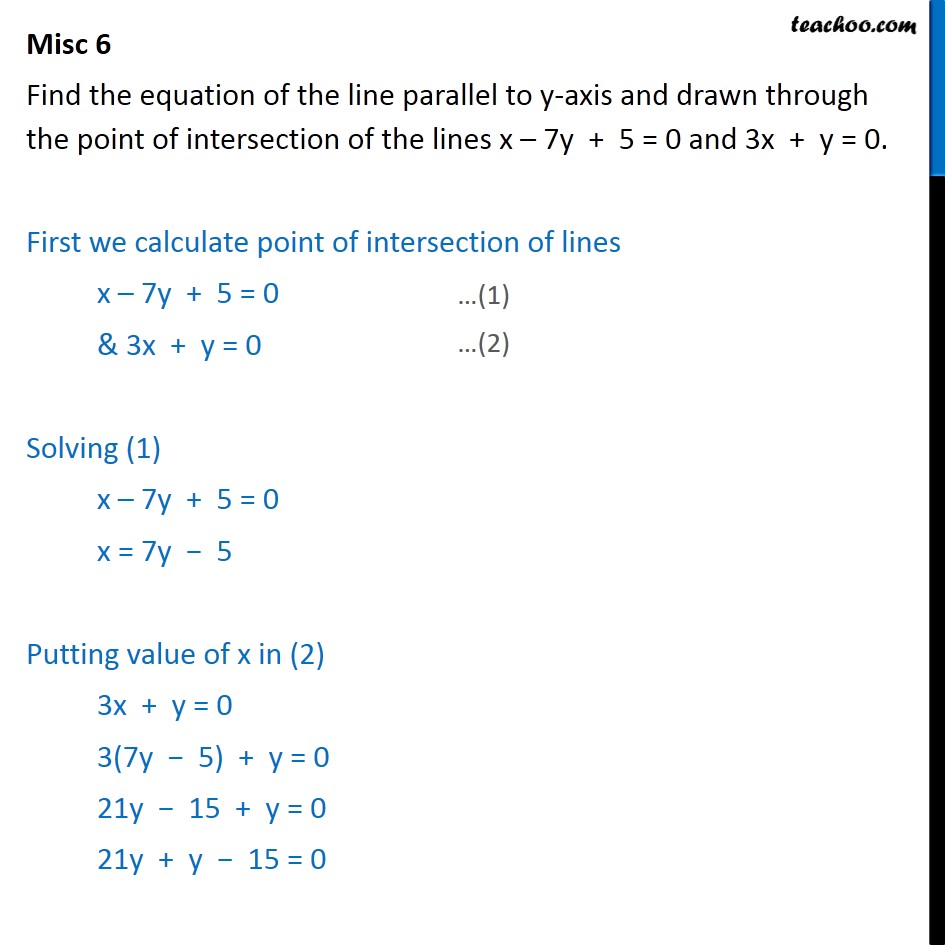

It is the point where the line crosses the y axis. The y-intercept of a line is the value of y when x=0. Slope is the coefficient of x so in this case slope = 3 This is slope intercept form, y = 3x - 6.You want to get y by itself on one side of the equation, so you need to divide both sides by 2 to get y = 3x - 6.Subtract 12 from both sides of the equation to get 6x - 12 = 2y.Add 2y to both sides to get 6x = 12 + 2y.Your goal is to get the equation into slope intercept format y = mx + b You have the equation of a line, 6x - 2y = 12, and you need to find the slope. If you have the equation for a line you can put it into slope intercept form. Slope intercept form y = 7x - 9 becomes 7x - y = 9 written in standard form. Subtract y from both sides of the equation to get 7x - y - 9 = 0Īdd 9 to both sides of the equation to get 7x - y = 9 Note that the equation should not include fractions or decimals, and the x coefficient should only be positive. Use either the point slope form or slope intercept form equation and work out the math to rearrange the equation into standard form. You may also see standard form written as Ax + By + C = 0 in some references. Find the difference between the y coordinates, Δy is change in y.Here you need to know the coordinates of 2 points on a line, (x 1, y 1) and (x 2, y 2).

In physics this may be interpreted as the path that a particle follows if no force is applied to it.\\
#Parallel line equation how to#
The calculator will generate a step-by-step explanation on how to obtain the result. This calculator find and plot equations of parallel and perpendicular to the given line and passes through given point. A geodesic is the shortest path between two points in a given geometry. Parallel and perpendicular line calculator. In non-Euclidean geometry, it is more common to talk about geodesics than (straight) lines.

Please help improve this section by adding citations to reliable sources. This will never hold if the two planes are not in the same three-dimensional space.Įxtension to non-Euclidean geometry Two distinct planes q and r are parallel if and only if the distance from a point P in plane q to the nearest point in plane r is independent of the location of P in plane q. Similar to the fact that parallel lines must be located in the same plane, parallel planes must be situated in the same three-dimensional space and contain no point in common. This never holds for skew lines.Ī line m and a plane q in three-dimensional space, the line not lying in that plane, are parallel if and only if they do not intersect.Įquivalently, they are parallel if and only if the distance from a point P on line m to the nearest point in plane q is independent of the location of P on line m. Two distinct lines l and m in three-dimensional space are parallel if and only if the distance from a point P on line m to the nearest point on line l is independent of the location of P on line m. Only if they are in a common plane are they called parallel otherwise they are called skew lines. Two lines in the same three-dimensional space that do not intersect need not be parallel. The parallel symbol is ∥ Two lines in three-dimensional space Parallel lines are made up of two or more lines with the exact distance between them and never merge or diverge. 2.2 Two lines in three-dimensional space Therefore, the equation of a line that is parallel to \(y 2x + 1\) is \(y 2x 6\).2.1.4 Distance between two parallel lines.


 0 kommentar(er)
0 kommentar(er)
